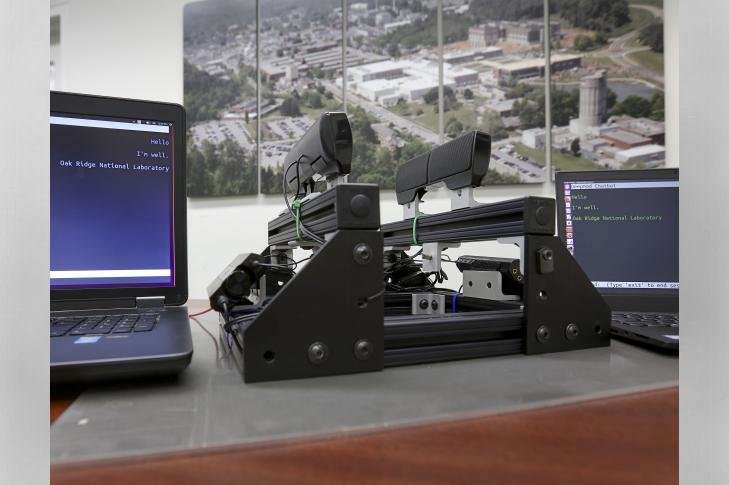Machine speak: Left to their own devices, computers can figure it out

Using novel machine learning techniques, a research team from the Department of Energy's Oak Ridge National Laboratory is teaching electronic devices how to speak for themselves.
Email, texting, image sharing and social media posts take place over networks that are reliable—most of the time. When certain connections are lost or disrupted by a physical or cyberattack, electronic devices immediately lose touch, and they are not equipped to find another method of communication.
Electronics are only as smart as their design. With proper training and intelligence, devices could be programmed to seek out available media, such as acoustics, optics or radio frequencies, and figure out how to transmit and receive messages on their own without being told beforehand.
For example, multiple response teams using two-way radio devices, or walkie-talkies, during an emergency are limited to a finite number of available frequencies. The same devices could be programmed and trained through machine learning and intelligence to seek alternate means to keep people connected, which is critical in life-and-death scenarios.
"The devices, pre-equipped with language and the ability to communicate, could begin sharing data of any kind over just about any physical medium," said ORNL's Adam Anderson who leads a team specializing in computing, networking and cybersecurity. "They will initially go through a trial-and-error volley of information, developing their own patterns as they go, until they reach the most efficient and accurate mode of message transmission."
The resulting language, or machine speech, is unrecognizable to humans, a phenomenon that can evoke controversy—and even fear—over whether machines may begin communicating independently. But, according to ORNL researchers, allowing computers to talk to each other, rather than telling computers how to communicate, is what gives them the intelligence to optimize their ability to maintain contact.
"In other words, we're training and programming devices to figure out the best way to communicate for themselves rather than being overly prescriptive," Anderson said.
One of the key issues ORNL researchers had to overcome was having the devices converge on an agreed speech without any back-channel assistance. "We felt it was 'cheating' if the devices learned anything from an outside, or unrealistic, source; they needed to converge all on their own," Anderson said.
To demonstrate machine speech, Anderson and his team connected two laptop computers to separate speakers and microphones facing each other. The researchers programmed the devices with language comprising sounds known as phonemes, the smallest units of human speech including consonants, vowels and syllables. The phonemes replaced the digital bits computers typically use to communicate.
Anderson input the numbers 1 through 5 on the transmitting computer and told it to "speak" them to the receiving computer. The receiving computer output the words "won, too, three, forr, five" on its screen. As they bantered, the two machines adjusted and corrected their speech until the receiving computer produced the numbers correctly.
"To us, the language emitting from the speakers is distorted, like pulsing static, yet the computers understand their speech as it becomes more refined through training," Anderson said. "Ultimately, the technology demonstrated here can be used in high-speed digital communications between devices."
Other physical media can be used to demonstrate computer speech transmission, such as light through fiber optics or radio waves.
As the project progresses, the ORNL team plans to use these software radio, machine learning and deep neural network techniques to replace classic digital modems in computers. This approach to device communications aims to improve the robustness of networks associated with smart grid technologies against malicious attacks.
Provided by Oak Ridge National Laboratory




















